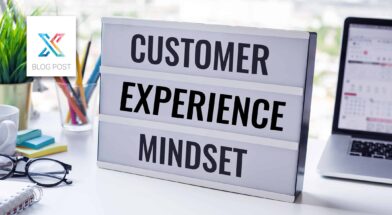Introduction
In today's highly competitive business landscape, delivering exceptional customer experiences has become a strategic necessity for organizations. To achieve this, businesses need to understand their customers on a deeper level and cater to their unique needs and preferences. We at Client Savvy have found one of the most powerful tools in this endeavor is customer segmentation. In this blog post, we will explore the concept of customer segmentation, its significance in understanding customer needs, and how it serves as the foundation for effective customer experience management. We will delve into the definition of customer segmentation, its role in consumer segmentation and user segmentation, discuss customer segmentation analysis, and highlight various customer segmentation models and approaches that can be employed to optimize customer experience management.
Customer and User Segmentation Defined
So, what is Customer Segmentation? Customer segmentation is the process of categorizing customers into specific groups based on criteria such as: demographics, psychographics, purchasing behavior, preferences, needs, etc. By segmenting customers, businesses gain a deeper understanding of their diverse customer base. Thus, enabling them to tailor their products, services, and marketing efforts to specific segments. Clearly defining customer segments is essential to establish boundaries and characteristics for each segment. This enables businesses to create targeted marketing strategies, develop personalized offerings, and deliver tailored customer experiences that resonate with the unique needs and preferences of each segment.
Consumer segmentation focuses on grouping customers based on demographic, geographic, and psychographic characteristics. User segmentation, on the other hand, emphasizes grouping customers based on their behaviors and engagement with a product or service. Combining these approaches provides a comprehensive understanding of customers, enabling businesses to deliver customized experiences and solutions.
The Role of Customer Segmentation in Customer Experience Management
- Personalization and Relevant Communication: Effective customer segmentation enables businesses to personalize interactions and communication with customers. By understanding the unique characteristics and preferences of each segment, companies can tailor their messaging, offers, and experiences to resonate with specific customer groups. This level of personalization leads to more relevant and engaging interactions, fostering positive customer experiences.
- Targeted Marketing and Product Development: Customer segmentation allows businesses to focus their marketing efforts and resources on the most valuable customer segments. By identifying the needs and preferences of each segment, companies can develop targeted marketing campaigns, design products that cater to specific segment requirements, and align their offerings with the expectations of their most profitable customers.
- Improved Customer Satisfaction and Loyalty: Segmentation helps businesses identify and address the specific pain points and desires of different customer segments. By tailoring products, services, and support to meet the unique needs of each segment, companies can enhance their customers’ experience and foster long-term loyalty. Happy and loyal customers are more likely to become brand advocates and contribute to positive word-of-mouth marketing.
- Efficient Resource Allocation: Customer segmentation allows businesses to allocate resources efficiently by focusing on segments that offer the greatest potential for growth and profitability. By understanding the value and characteristics of each segment, organizations can prioritize their efforts, optimize marketing budgets, and allocate resources strategically.
Customer Segmentation Models and Approaches
- Demographic Segmentation - Categorizes customers based on characteristics such as age, gender, income, occupation, and education. This approach provides a basic understanding of customers and is useful for targeting broad segments. For example, a cosmetics company may target a specific age group for their anti-aging skincare line.
- Psychographic Segmentation - Focuses on customers' attitudes, values, lifestyles, and personality traits. It helps businesses understand the psychological motivations that drive customer behavior, allowing for more targeted and nuanced marketing strategies. For instance, a fitness brand may target health-conscious individuals with an active lifestyle who value sustainability and ethical sourcing.
- Behavioral Segmentation - Groups customers based on their actions, such as purchasing behavior, usage patterns, brand interactions, and loyalty. This approach enables businesses to identify segments with similar behaviors and tailor marketing efforts accordingly. For instance, an e-commerce platform may target frequent purchasers with personalized offers and loyalty rewards.
- Needs-Based Segmentation - Categorizes customers based on their specific needs, problems, or desires. This approach allows businesses to develop customized solutions and experiences that address the unique requirements of each segment. For example, a software company may offer different pricing tiers to cater to the needs of small businesses, mid-sized enterprises, and large corporations.
Customer Segmentation Analysis: Tools and Techniques
- Surveys and Feedback: Surveys and customer feedback provide valuable insights into customer preferences, expectation/satisfaction levels, and needs. By collecting feedback from different customer segments, businesses can refine their segmentation strategies and make informed decisions about customer experience management. Feedback can be collected through our customer feedback tool on a one-off annual baseline and/or ongoing project-based/matter-based feedback requests.
- Customer Journey Mapping: Customer journey mapping visualizes the end-to-end customer experience, highlighting milestones and touchpoints, pain points, and opportunities for improvement. By analyzing customer journeys empathetically for different segments, businesses can identify areas where the experience can be enhanced. Mapping the customer journey helps businesses align their processes, interactions, and communications with the specific needs of each segment. All new clients to Client Savvy complete a customer journey mapping session as part of onboarding.
- Data Analytics and CRM Systems: Data analytics and customer relationship management (CRM) systems play a crucial role in customer segmentation analysis. These tools help businesses collect and analyze customer data, enabling them to identify patterns, preferences, and behaviors that inform the segmentation process. Advanced analytics techniques, such as clustering algorithms, can identify distinct customer segments based on data patterns. Client Savvy’s clients can integrate their current CRM with the Client Feedback Tool® to streamline feedback requests and house data in one system.
- A/B Testing and Experimentation: A/B testing and experimentation allow businesses to test different strategies, messages, or experiences on different customer segments. This process helps identify the most effective approaches for each segment, leading to improved customer experiences and outcomes. By comparing results from control and test groups, businesses can refine their segmentation strategies and optimize customer experience management.
Conclusion
Effective customer segmentation is a cornerstone of successful customer experience management. By dividing their customer base into distinct segments based on shared characteristics, behaviors, and preferences, businesses can tailor their marketing efforts, personalize interactions, and design customized solutions that meet the unique needs of each segment. Through client segmentation, organizations can empathetically enhance customer experience, drive loyalty, allocate resources efficiently, and ultimately achieve sustainable growth in a competitive marketplace. By employing customer segmentation models and approaches, gathering customer feedback at multiple points in a customer journey, leveraging data analytics and CRM systems, and continuously analyzing and refining customer segmentation strategies, businesses can create meaningful experiences that resonate with customers and foster long-term relationships based on trust and value. A customer-centric approach driven by effective customer segmentation empowers organizations to optimize customer experience management and deliver exceptional experiences that drive customer loyalty and advocacy.





